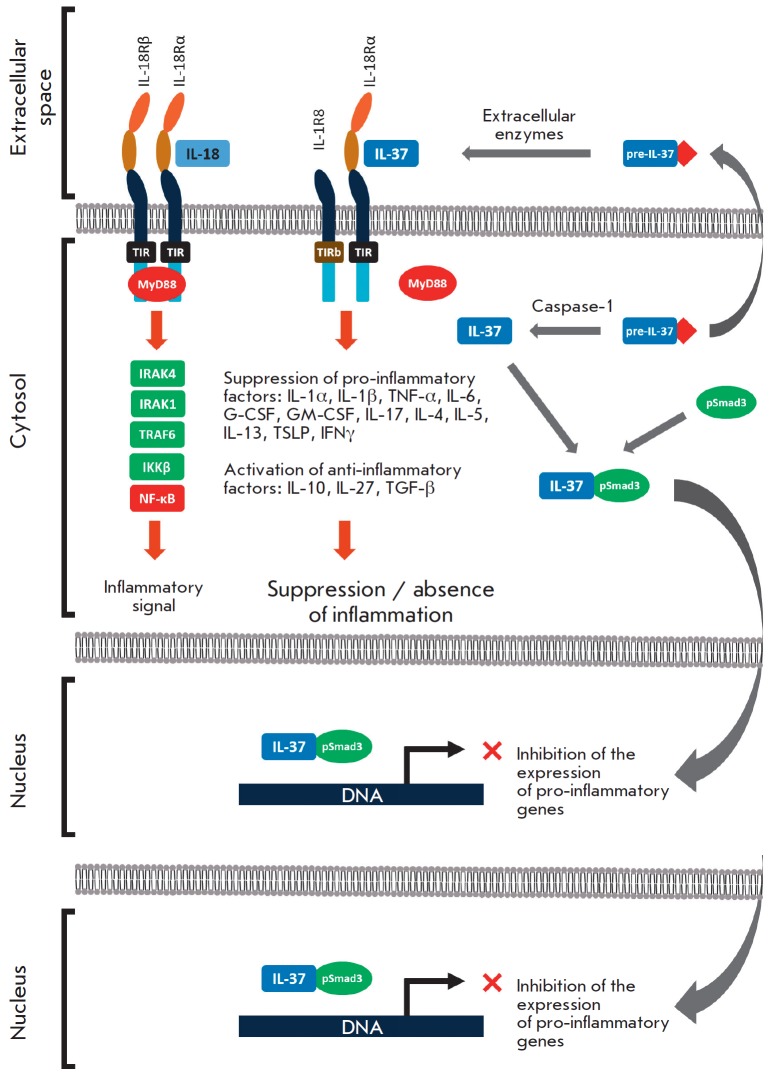Fig. 2.
Mechanisms of the anti-inflammatory effects of IL-37. IL-18 exerts its pro-inflammatory effects through a receptor complex consisting of the IL-18Rα and IL-18Rβ chains. The TIR domains come together and further bind to the MyD88 factor inducing the pro-inflammatory effect. IL-37 is synthesized as a precursor (pre-IL-37) which is capable of secreting into the extracellular space, where it is processed to a mature form through an unidentified mechanism. Mature IL-37 binds to the chains IL-18Rα and IL-1R8 (instead of IL-18Rβ); at the same time, the IL-1R8 chain carries the mutant TIRb domain (instead of functional TIR), which does not allow realization of the MyD88-mediated inflammatory effect [21].The precursor of IL-37 is also capable of being processed intracellularly into mature form by Caspase-1. In the cytosol, IL-37 binds to the phosphorylated form of the Smad3 factor (pSmad3). Apparently, The IL-37 / Smad3 complex is able to translocate into the nucleus and inhibit the transcription of pro-inflammatory genes (the ability of the complex to bind to DNA has not been confirmed yet)

